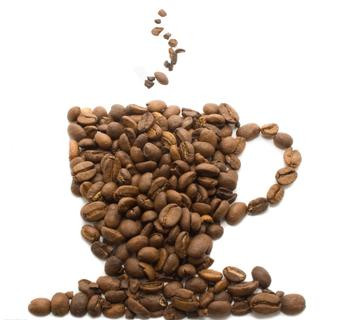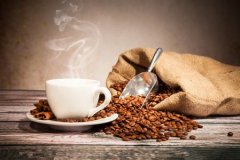Introduction to the categories and characteristics of Coffee Coffee Classification Chart
Many people seem to be addicted to coffee and are willing to spend a lot of time in long queues in famous coffee chains, but do they really know anything about coffee? I'm too embarrassed to ask the clerk some basic questions about coffee. Let's popularize the 8 things you need to know about coffee to improve your coffee taste in a minute.

1. Shallow baking (Light Roast) vs deep baking (Dark Roast)
According to the American classification, the roasting of coffee beans can be divided into eight stages from shallow to deep. The taste of coffee mainly depends on the baking degree. Generally, the deeper the roasting degree, the stronger the bitter taste, and the lower the roasting degree, the higher the sour taste. Baking depth mainly depends on the characteristics of raw beans, personal preferences and other factors.
two。 Arabica (Arabica) vs Robusta (Robusta)
In terms of varieties, coffee trees are mainly divided into two types: one is Arabica, the other is Robusta.
Arabica coffee is mainly produced in tropical South America, such as Central Brazil, with smaller bean shape, lower caffeine content and higher price.
Robusta is produced in Madagascar in west-central and eastern Africa, and Indonesia in Asia. It has a large bean shape, about twice the caffeine content of Arabica, and a low price.
Ps: about 75% of the world's coffee is Arabica, but only 10% is coffee that can be used in high-end coffee shops.
3. Espresso (Espresso) vs dripping Coffee (Drip)
Espresso is made by letting hot water flow through a handful of fine coffee powder under high pressure, with high caffeine concentration and coffee fat.
The dripping coffee is to let the boiling water through the coarse ground coffee powder, the caffeine concentration is low, basically does not contain coffee fat, is more suitable for drinking in large quantities.

4. Latte (Caffee Latte) vs cappuccino (Cappuccino)
Lattes and cappuccinos both belong to milk coffee. The main difference lies in the ratio of espresso, milk and milk bubbles. For cappuccino, the amount of espresso, hot milk and foam should be the same (1:1:1), while hot latte milk is more (1:2:1). The latte tastes more compact and delicate, while cappuccino is slightly dry.

5. Latte (Caffee Latte) vs Ole coffee (Cafe au Lait)
Simply put, lattes are made from Espresso and steamed milk, while Ole coffee is made from dripping coffee with steamed milk.
6.Espresso or Expresso?
If the above 5 points are not clear for the time being, remember to pronounce them correctly first! Espresso is Italian, meaning "under pressure". In a coffee shop, if you ask for "spr so", it means you are in a hurry; Expresso can only make the clerk laugh.
7. The coffee spoon is not for scooping coffee.
Add sugar and stir coffee is the "full-time" coffee spoon, use it to scoop a sip of coffee is a rude thing, and do not use it to "help" smash the cube sugar in the cup. When drinking, take it out of the cup and put it on the plate.

8. Blowing cold coffee with your mouth is not elegant enough.
Drink coffee while it is hot. If it is too hot, gently stir it with a coffee spoon to cool it, or wait for it to cool naturally before drinking. If you try to cool your coffee with your mouth, remember that this is an impolite gesture.

If you are still dizzy after reading the above text, look directly at this easy-to-understand coffee classification map.

Important Notice :
前街咖啡 FrontStreet Coffee has moved to new addredd:
FrontStreet Coffee Address: 315,Donghua East Road,GuangZhou
Tel:020 38364473
- Prev

In addition to drinking coffee, there are 7 major beauty effects!
Coffee has become an indispensable part of our lives. What you don't know is that coffee has unexpected effects on beauty. NO.1 Antioxidant A cup of coffee is extremely high in antioxidants, which can help improve the overall health of skin. Antioxidants delay premature skin aging caused by sunlight and pollution, and also scavenge free radicals that are harmful to skin. in coffee
- Next

12 constellations exclusive coffee, see which one is suitable for you!
People who like to drink coffee are happy, because you can get a romance in the process of tasting coffee. 12 constellations like coffee in different ways, which makes the coffee world lively. Will you drink your constellation coffee? Aries (03Comp21-04gam20) Aries, with a natural narrow heart, will never flinch when he is particularly vigorous.
Related
- Beginners will see the "Coffee pull flower" guide!
- What is the difference between ice blog purified milk and ordinary milk coffee?
- Why is the Philippines the largest producer of crops in Liberia?
- For coffee extraction, should the fine powder be retained?
- How does extracted espresso fill pressed powder? How much strength does it take to press the powder?
- How to make jasmine cold extract coffee? Is the jasmine + latte good?
- Will this little toy really make the coffee taste better? How does Lily Drip affect coffee extraction?
- Will the action of slapping the filter cup also affect coffee extraction?
- What's the difference between powder-to-water ratio and powder-to-liquid ratio?
- What is the Ethiopian local species? What does it have to do with Heirloom native species?

